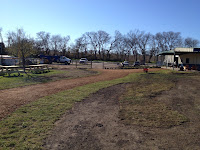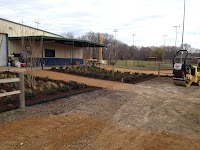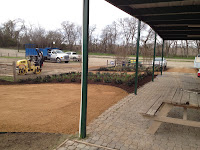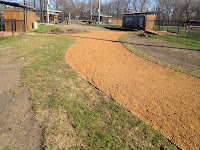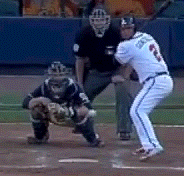 |
| Curb Appeal - you got it!! |
Triple Creek Academy is getting a make-over and it's starting at the curb. A new entrance, with walkway, garden area - gets you to Fields 1 & 2.
The main highlight is the crushed granite pathways. Two pathways from the parking lot to the 'clubhouse' and a winding pathway from the 'clubhouse' to Fields 1 & 2.
The make-over doesn't stop there - Field 1, used for 13U & 14U has got a new infield 'skin'. New bermuda grass turf has been laid down in the foul territories from infield/outfield edge - from 1st base to 3rd base. Not only that - the infield got cut back a bit deeper - so now the shortstop and second basemen can play in the right spot and get better angles to balls in the hole and up the middle. Wait for it.....the infield grass has also been renewed with the same bermuda turf that is laid in foul territory.
Field 1 is still having final touches done - so it won't be ready for this weekend's tournament - however it is targeted to be ready for next weekend's tournament - "Clover all Over".
The following are more photos of the pathways - photos of Field 1 coming soon.
